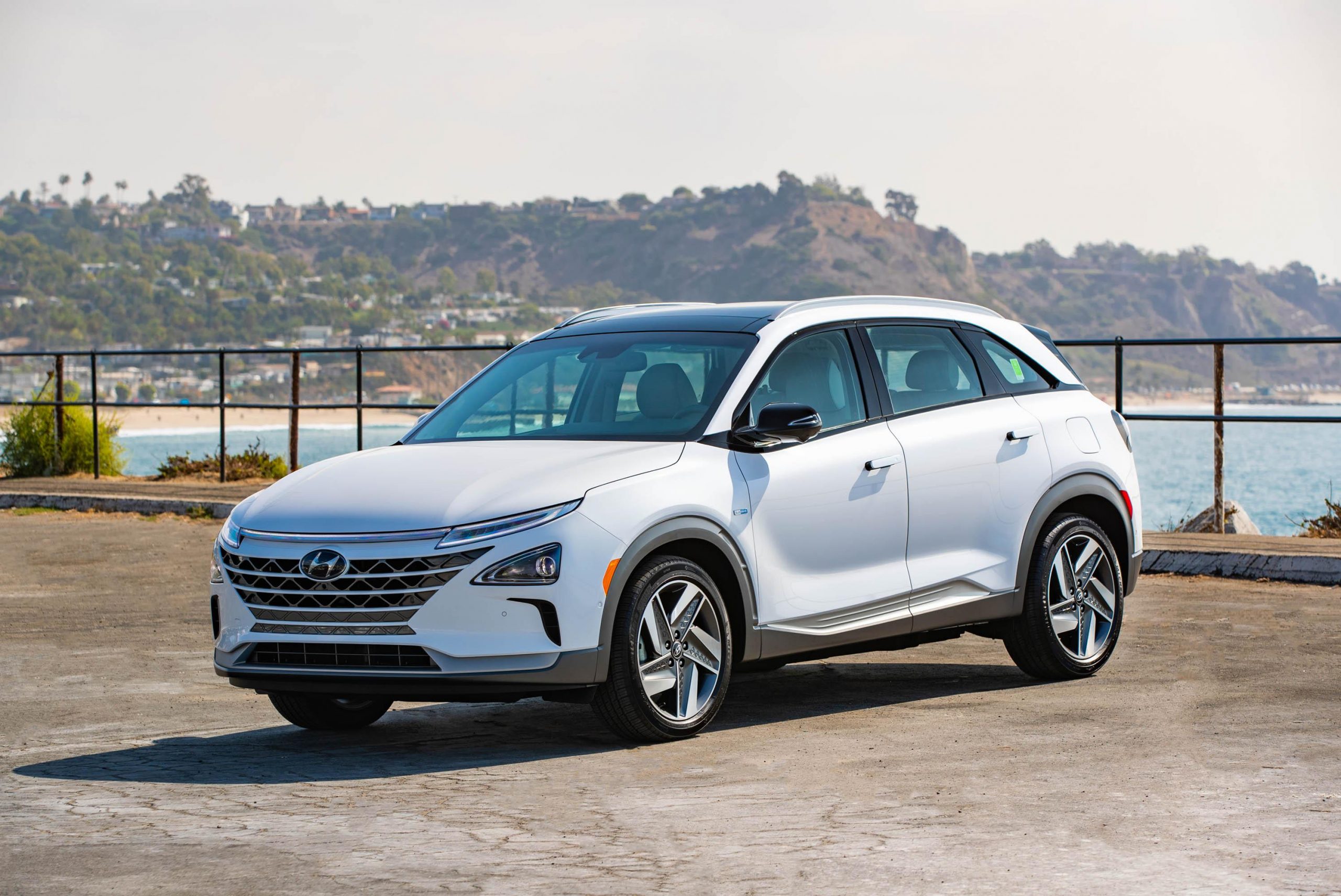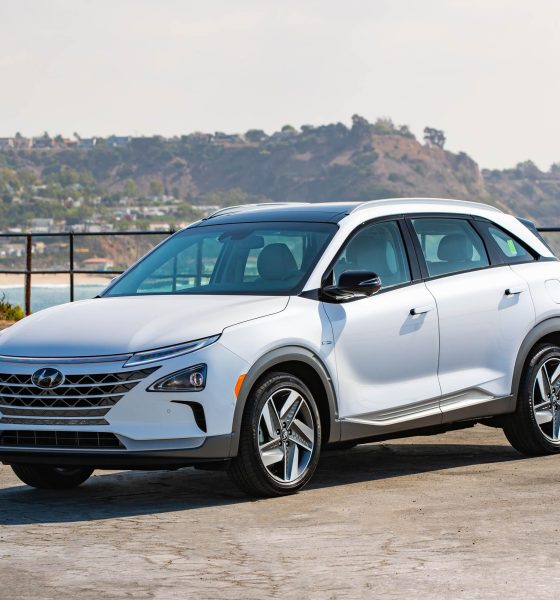

News
After calling Teslas a “toy” years ago, Hyundai’s belief in hydrogen is being tested
As the automotive sector transitions into the renewable age, the battle between all-electric cars and hydrogen-powered vehicles almost seems over. Yet even with the dominance of electric vehicles like the Model 3 and Model Y from American automaker Tesla, veteran automakers such as Hyundai are still hoping that hydrogen vehicles could eventually find their momentum.
It is, however, not that easy. As noted by former Hanwha Investment & Securities Co. analyst Ryu Yeon-wha, who works as a green energy mobility consultant, Hyundai has gone “too far and invested too much money on hydrogen cars to stop now.” “Just two years ago, an official at Hyundai told analysts that ‘we do not make a toy like Tesla.’ They told people battery-powered electric cars wouldn’t be able to travel for more than 150 kilometers, while hydrogen cars are advantageous because of the longer-range driving,” the green energy mobility consultant said.
Indeed, it would likely be difficult for Hyundai to dub Tesla’s electric cars as “toys” today, considering the sheer dominance of the Model 3 and the Model Y in the auto segment. Both vehicles have managed to break into the general auto sector, with CEO Elon Musk even noting that the Model Y has the potential to become the best-selling car in the world, period, beating vehicles like the ubiquitous Toyota Corolla. Pure electric cars have greatly improved over the years as well, and their weaknesses against hydrogen cars are becoming less and less notable.
Hydrogen cars like the Hyundai Nexo remain a work in progress. A Bloomberg report recently cited the experience of Song Young-jin, a 38-year-old sales manager in Euiwang city, South Korea, who purchased a Hyundai Nexo, a hydrogen-powered SUV, in March 2020. Being encouraged by Hyundai’s advertising for the vehicle, the sales manager bought the SUV, but only a few months into the vehicle’s ownership, Song was exasperated.
Even if South Korea is one of hydrogen cars’ most successful markets, the Nexo owner still had to drive 50 km (40 miles) every week to the nearest hydrogen station to refuel his SUV. Song also looked in dismay as the value of his hydrogen vehicle in the second-hand market crashed on a used car site by about $1,000 a month. The maintenance cost for parts like the hydrogen tanks of the Nexo also proved substantial. These experiences ultimately encouraged Song to buy a pure electric car next time.
“I liked the hydrogen car itself—it’s quiet, and charging takes just 5 minutes, faster than an electric car. But refueling stations are lacking, and the maintenance costs [for parts such as hydrogen tanks] are huge, which is probably why they’re so cheap in the used-car market. Next time, I’ll buy electric,” Song said.
Hyundai has no intention of abandoning its hydrogen car programs, though Hyundai Motor Group Chairman Euisun Chung, since he took the company’s reins last year, has taken steps towards full electric cars. The company’s sales figures seem to speak for themselves. While the company expects to sell more hydrogen cars in the future, the fact remains that in South Korea from January through September this year, Hyundai sold about 6,400 Nexos domestically while exporting 875. Hyundai’s battery-powered cars, on the other hand, sold 87,000 units over the same period globally, as per data from Hana Financial Investment.
Don’t hesitate to contact us with news tips. Just send a message to tips@teslarati.com to give us a heads up.

Elon Musk
Starlink passes 9 million active customers just weeks after hitting 8 million
The milestone highlights the accelerating growth of Starlink, which has now been adding over 20,000 new users per day.

SpaceX’s Starlink satellite internet service has continued its rapid global expansion, surpassing 9 million active customers just weeks after crossing the 8 million mark.
The milestone highlights the accelerating growth of Starlink, which has now been adding over 20,000 new users per day.
9 million customers
In a post on X, SpaceX stated that Starlink now serves over 9 million active users across 155 countries, territories, and markets. The company reached 8 million customers in early November, meaning it added roughly 1 million subscribers in under seven weeks, or about 21,275 new users on average per day.
“Starlink is connecting more than 9M active customers with high-speed internet across 155 countries, territories, and many other markets,” Starlink wrote in a post on its official X account. SpaceX President Gwynne Shotwell also celebrated the milestone on X. “A huge thank you to all of our customers and congrats to the Starlink team for such an incredible product,” she wrote.
That growth rate reflects both rising demand for broadband in underserved regions and Starlink’s expanding satellite constellation, which now includes more than 9,000 low-Earth-orbit satellites designed to deliver high-speed, low-latency internet worldwide.
Starlink’s momentum
Starlink’s momentum has been building up. SpaceX reported 4.6 million Starlink customers in December 2024, followed by 7 million by August 2025, and 8 million customers in November. Independent data also suggests Starlink usage is rising sharply, with Cloudflare reporting that global web traffic from Starlink users more than doubled in 2025, as noted in an Insider report.
Starlink’s momentum is increasingly tied to SpaceX’s broader financial outlook. Elon Musk has said the satellite network is “by far” the company’s largest revenue driver, and reports suggest SpaceX may be positioning itself for an initial public offering as soon as next year, with valuations estimated as high as $1.5 trillion. Musk has also suggested in the past that Starlink could have its own IPO in the future.
News
NVIDIA Director of Robotics: Tesla FSD v14 is the first AI to pass the “Physical Turing Test”
After testing FSD v14, Fan stated that his experience with FSD felt magical at first, but it soon started to feel like a routine.

NVIDIA Director of Robotics Jim Fan has praised Tesla’s Full Self-Driving (Supervised) v14 as the first AI to pass what he described as a “Physical Turing Test.”
After testing FSD v14, Fan stated that his experience with FSD felt magical at first, but it soon started to feel like a routine. And just like smartphones today, removing it now would “actively hurt.”
Jim Fan’s hands-on FSD v14 impressions
Fan, a leading researcher in embodied AI who is currently solving Physical AI at NVIDIA and spearheading the company’s Project GR00T initiative, noted that he actually was late to the Tesla game. He was, however, one of the first to try out FSD v14.
“I was very late to own a Tesla but among the earliest to try out FSD v14. It’s perhaps the first time I experience an AI that passes the Physical Turing Test: after a long day at work, you press a button, lay back, and couldn’t tell if a neural net or a human drove you home,” Fan wrote in a post on X.
Fan added: “Despite knowing exactly how robot learning works, I still find it magical watching the steering wheel turn by itself. First it feels surreal, next it becomes routine. Then, like the smartphone, taking it away actively hurts. This is how humanity gets rewired and glued to god-like technologies.”
The Physical Turing Test
The original Turing Test was conceived by Alan Turing in 1950, and it was aimed at determining if a machine could exhibit behavior that is equivalent to or indistinguishable from a human. By focusing on text-based conversations, the original Turing Test set a high bar for natural language processing and machine learning.
This test has been passed by today’s large language models. However, the capability to converse in a humanlike manner is a completely different challenge from performing real-world problem-solving or physical interactions. Thus, Fan introduced the Physical Turing Test, which challenges AI systems to demonstrate intelligence through physical actions.
Based on Fan’s comments, Tesla has demonstrated these intelligent physical actions with FSD v14. Elon Musk agreed with the NVIDIA executive, stating in a post on X that with FSD v14, “you can sense the sentience maturing.” Musk also praised Tesla AI, calling it the best “real-world AI” today.
News
Tesla AI team burns the Christmas midnight oil by releasing FSD v14.2.2.1
The update was released just a day after FSD v14.2.2 started rolling out to customers.

Tesla is burning the midnight oil this Christmas, with the Tesla AI team quietly rolling out Full Self-Driving (Supervised) v14.2.2.1 just a day after FSD v14.2.2 started rolling out to customers.
Tesla owner shares insights on FSD v14.2.2.1
Longtime Tesla owner and FSD tester @BLKMDL3 shared some insights following several drives with FSD v14.2.2.1 in rainy Los Angeles conditions with standing water and faded lane lines. He reported zero steering hesitation or stutter, confident lane changes, and maneuvers executed with precision that evoked the performance of Tesla’s driverless Robotaxis in Austin.
Parking performance impressed, with most spots nailed perfectly, including tight, sharp turns, in single attempts without shaky steering. One minor offset happened only due to another vehicle that was parked over the line, which FSD accommodated by a few extra inches. In rain that typically erases road markings, FSD visualized lanes and turn lines better than humans, positioning itself flawlessly when entering new streets as well.
“Took it up a dark, wet, and twisty canyon road up and down the hill tonight and it went very well as to be expected. Stayed centered in the lane, kept speed well and gives a confidence inspiring steering feel where it handles these curvy roads better than the majority of human drivers,” the Tesla owner wrote in a post on X.
Tesla’s FSD v14.2.2 update
Just a day before FSD v14.2.2.1’s release, Tesla rolled out FSD v14.2.2, which was focused on smoother real-world performance, better obstacle awareness, and precise end-of-trip routing. According to the update’s release notes, FSD v14.2.2 upgrades the vision encoder neural network with higher resolution features, enhancing detection of emergency vehicles, road obstacles, and human gestures.
New Arrival Options also allowed users to select preferred drop-off styles, such as Parking Lot, Street, Driveway, Parking Garage, or Curbside, with the navigation pin automatically adjusting to the ideal spot. Other refinements include pulling over for emergency vehicles, real-time vision-based detours for blocked roads, improved gate and debris handling, and Speed Profiles for customized driving styles.








